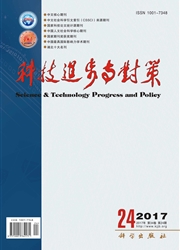

 中文摘要:
中文摘要:
参与合作研发对企业获取新知识和维持长期竞争优势至关重要,但知识溢出也会危害其核心竞争力,造成企业在合作研发资源投入过程中知识共享与保护两难的困境。基于可占有能力视角,运用Stackelberg模型分析得出:在企业合作研发进行资源投入决策时,当期非知识资源和知识要素投入可以互相替换,企业可根据自身可占有能力控制二者的投入比例,进而限制知识溢出;领导企业率先投入资源面临着道德风险,只有当可获得比追随企业更多的合作研发成果时,领导企业才有动机参与合作研发;领导企业与追随企业的资源投入比例与其在合作研发中的成本收益比相一致。
 英文摘要:
英文摘要:
Collaborative RD is important for firms to gain new competitive advantages,but knowledge outgoing spillover harms their existing competitive advantages,which puts them into a dilemma while knowledge sharing and protection.This study find thatby utilizing the Stackelberg based on appropriability,current non-knowledge efforts and knowledge are substitutable in collaborative RD,and according to their appropriability,they can gain benefits from collaboration and restrict knowledge outgoing spillover simultaneously through controlling the ratio of current non-knowledge efforts to knowledge invested;because the leader invests resources first and faces moral hazards,it has the incentives to participatein collaborative RD only when its benefits from collaborative RD fruits and knowledge incoming spillover are bigger than those of the follower;the leader and the follower invest resources at ratios consistent with the benefits and costs.
 同期刊论文项目
同期刊论文项目
 同项目期刊论文
同项目期刊论文
 期刊信息
期刊信息
